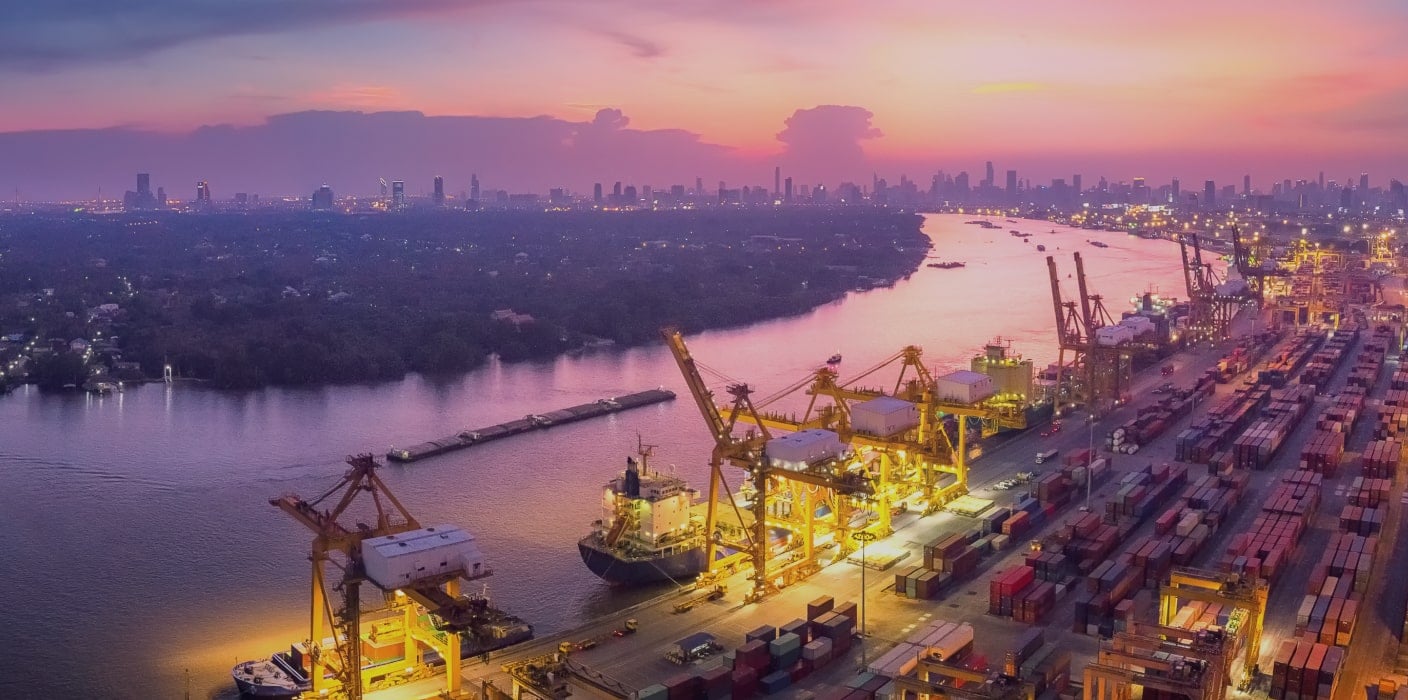The crises we’re living aren’t just coming and going, they’re piling on. This is what is specific about the current period. We thought we were done with Covid-19 but we’re not. Mid-March, China reintroduced a temporary lockdown for the 17 million inhabitants of Shenzhen, China's Silicon Valley, as well as its port, which is one of the most important ports in the country for the transport of containers. Every year, 194 million tons of goods transit through Shenzhen. On top of this, war sparked in Ukraine end of February, and inflationary pressures are reaching levels that had not been seen for decades (3.6% in France, 5.1% in Germany, 6.2% in the Netherlands and 8.3% in Hungary).
Maritime transport is the weakest link in the global economy. Few people are aware of this, but 90% of the products we consume travel by sea. Any variations, whether upwards or downwards, have consequences on the production chains of companies. The Covid pandemic has completely uprooted maritime transport and led to an explosion in costs (see graph below). In 2019, the average price of a 20-foot container (i.e., 33 cubic meters) was around €1,200. This has now risen to over €13,000. Sometimes it can even go up to €20,000. Such an increase is unsustainable, even for the transport of high value-added goods (where margins are generally higher).
At the beginning of the year, many were hoping for an upturn in maritime transport. It will have to wait. There are many disruptive factors: China’s zero Covid policy, the war in Ukraine, lack of containers to meet the high demand, and rising energy costs. At best, it will take until 2023 to see the beginning of port decongestion and a sustainable drop in freight rates. This means that companies that are dependent on international trade, either for inputs or for commercial outlets, will have to implement strategies to reduce costs (currency risk management when there is a currency issue, passing on the price to consumers and/or subcontractors, finding new suppliers, etc.).
The main causes of international trade disruption
|
Explanation
|
When to expect an improvement
|
|
| Zero-Covid policy | China confines its population at the slightest sight that Covid cases are on the rise. This is due to the ineffectiveness of the Chinese vaccine compared to the nucleic acid (RNA) vaccines developed by Western countries, and also to a desire to control the population. It is estimated that the congestion caused by closing a major Chinese port takes at least six to eight weeks to clear. China's main ports currently face a high risk of congestion: Shanghai (1st port in the world) and Ningbo-Zhoushan (2nd) and Qingdao (6th). | 2023, at best |
| War in Ukraine | Ukraine is a hub of international trade. It produces 70% of neon, a gas that is essential for the manufacturing of micro-components found in everyday goods such as smartphones and cars. It is also a major exporter of wiring harnesses (for cars) and agricultural products (wheat, sunflower oil, rapeseed, corn, etc.). | Not for years |
| Sanctions against Russia (related to the previous item) | The main maritime carriers have decided to suspend services to Russian ports, which contributes to causing havoc in the bulk market. Russia represents 3.7% of world trade in dry bulk (coal, fertilizer, grain, wood, etc.), for example. This explains the expected surge in prices for construction products this spring (+20% according to professionals). In addition, Russians represent a significant proportion of the world's merchant marine personnel. Their free movement could be hampered by sanctions. | Not for years |
| Shortage of shipping containers | The shortage of shipping containers started at the beginning of the Covid and has been increasing ever since. Containerized seaborne trade grew by 6% in 2021, while the number of new containers grew by only 4.5%. This is insufficient to meet demand. New containers are expected to enter the market in 2023, raising hopes that port congestion will ease. | 2023 |
| Rising energy prices | Chronic underinvestment in fossil fuels did not start with Covid but the pandemic has exacerbated the issue. Investment has not picked up for the time being, leading to fears of persistently high energy prices. | Not before 2023-24 |
| Strike risk in US West Coast ports | West Coast ports and port operators are preparing to negotiate new contracts with the dockers' union. This is the first time since 2014. Given the level of inflation in the United States (7.9%), the union is likely to demand large wage increases. The risk of a strike is high. If this were to happen, there would be a shift of traffic from Asia to the already oversubscribed East Coast ports. | In a few weeks |
The return of self-sufficiency
The Covid crisis and the current turmoil have exposed the vulnerabilities of globalized production chains. The question of relocating suitable and priority activities is once again being raised (particularly for the automotive sector, the software sector, and import and consumer goods sectors). In France, the outgoing president, Emmanuel Macron, wants to finance the relocation of a few specific sectors: the production of medicines and new technologies in the medical field (such as exoskeletons); a transition that is set to cost millions of euros. Germany has also raised the issue since Covid and German companies in the industrial sector, affected by persistent logistical problems, recently relocated their activities to Eastern Europe. But this was before the war in Ukraine. The issue of relocation is present in all European countries. There is no easy answer. There are several ways of relocating: some can be quick (change of supplier if the offer exists), while others will be longer, more expensive and more difficult.
But relocation cannot be the result of a simple decision, it takes time to happen. It generates costs for companies...and for consumers who have to bear them. Creating an industrial base therefore requires a strong political act, a long-term strategic vision, joint work with business leaders, and appropriate subsidies. In particular, it would be advisable to study each sector carefully, to respond to the concrete needs of companies, to remove any regulatory blockages, to identify host areas... and, above all, to invest in sectors of the future based on the existing base. Rather than relocating, we must localize, which is not to be understood as a contradiction with globalization. Business leaders have understood this for a long time.
Topics






